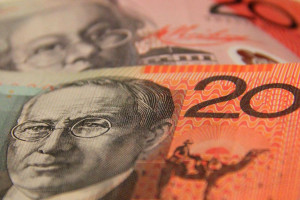
It is worth recalling that Australia, which occupies the 13th place in the world in terms of national GDP (with a population of about 25 million people), is by no means a passive object to be influenced by the main regional players. Canberra has a relatively small (52 thousand military men) but quite modern armed force. The country has a defence budget of about 23 billion dollars (12th place in the world).
In recent decades, Australia has been actively involved in US military actions, along with other major Anglo-Saxon countries (Great Britain and Canada). This has not been limited to only the neighbouring Timor or the adjacent islands of Oceania, as Australia deployed its forces quite far away from its territory, for example, in Iraq and Afghanistan. Recently, the United States made Australia instrumental in its plans to create a multilateral military and political anti-China formation in the region.
This is the reason behind the growing interest of China in Australia, as it evidently strives to block the prospect of such an alliance. In addition, Beijing’s efforts in this direction do not look at all hopeless, a fact that is accounted for by the specificity of a complex of factors (geographic, military and political, cultural and historical, economic etc.) designating the position of Australia in the region.
It wouldn’t be too much of a simplification to say that the ‘soul’ of an ordinary Australian belongs to the Anglo-Saxon world, while the ‘stomach’ is located in China. This ‘stomach’ is very important, as China’s share in Australia’s foreign trade has in recent years exceeded 30% (six times the share of the United States). Equally important is the fact that Australia has a constant positive balance in trade with China, which reaches a whopping $ 15 billion annually.
The opposite effect of the two above factors explains the dramatic positioning of Australia in the APR, which varies depending on which of the two main political forces is in power at the time.
For the supporters of the ruling right-centrist Liberal Party of Australia (LPA), the ratio of ‘soul’ / ‘stomach’ factors is greater, while that for their opponents from the left-centrist Australian Labour Party (ALP) is less.
Therefore, the motives of ‘ensuring security’ and ‘human rights’ in the process of developing relations with China are noticeable in the rhetoric and real actions of the current government of Malcolm Turnbull. And this is with the same (as LPA’s) interest in the further expansion of economic ties with Beijing.
Let us recall that in August last year, under the pretext of ‘security’, China was denied the right to acquire the 50.4% shares (for a huge amount of 7.7 billion dollars) of the Australian energy network distribution company Ausgrid.
On March 28 this year, just two days after the end of Li Keqiang’s visit to Australia, Turnbull said that his government would not initiate before parliament a procedure for ratifying the bilateral treaty on the extradition of citizens to their countries, signed ten years ago. As a pretext, concerns about the observance of ‘human rights’ in China were expressed.
This demonstrative political attack against China was especially striking in the face of the generally successful visit of the Chinese Prime Minister, during which a number of new agreements were concluded within the framework of the bilateral Free Trade Agreement, which entered into force in December 2015.
In Beijing, the results of this trip are generally regarded as evidence that Australia may serve as an important element of the ‘bridge’ between China and the United States (.
It should be noted, however, that these relations themselves are still shrouded in high uncertainty, which has hardly decreased after the first meeting of the leaders of both countries. And this uncertainty, which is fundamental for the APR, will inevitably be followed by smaller uncertainties, in particular, the one that accompanies the process of positioning Australia in the regional game.
For example, the results of the last presidential race in the United States, a country with which Australia is bound by a bilateral military and political union, have quite unexpectedly worked out in favour of Beijing’s plans for Canberra. The announcement by the new American president of US withdrawal from the Trans-Pacific partnership has had a discouraging effect on Australia (and also on Japan, another US ally in the APR).
Finally, it can be noted that the development of the regional political background, under which the visit of the Chinese Prime Minister to Australia took place, will undoubtedly provide an opportunity to continue observing the struggle of almost Shakespearean proportions in this country.
This stems from the reality that Australia (as, indeed, all the countries of Southeast Asia) continues looking for its own optimal course in the context of extremely important, though oppositely directed, factors.
Vladimir Terekhov, expert on the problems of the Asia-Pacific region, exclusively for the online magazine ‘New Eastern Outlook’.
